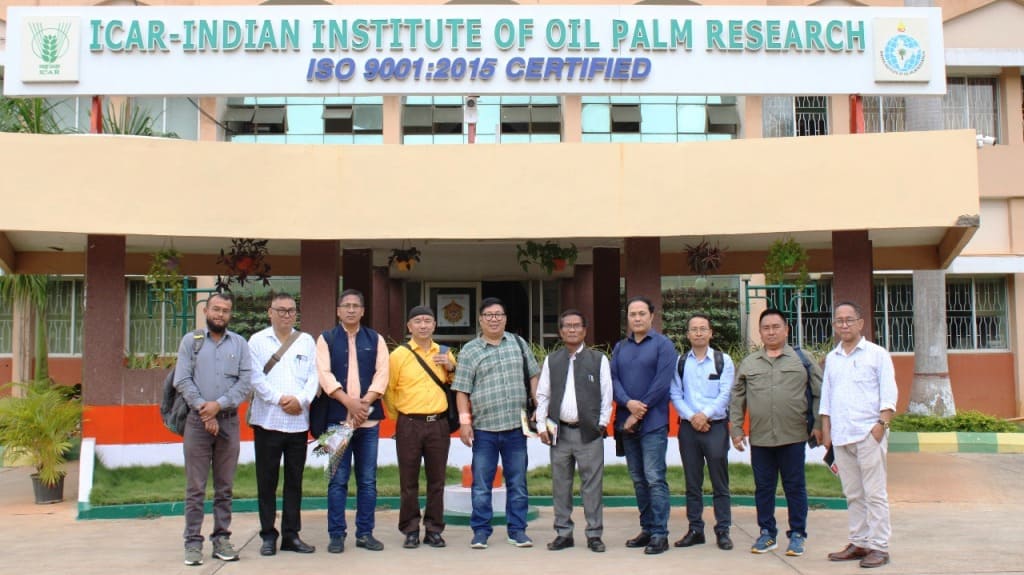IT News
Imphal, Dec 29:
India’s approach to oil palm cultivation significantly differs from practices in countries like Indonesia and Malaysia, ensuring it does not lead to deforestation, soil degradation, or adverse climate impacts. This distinction was emphasized by Dr. M.V. Prasad, Principal Scientist (Agricultural Extension) at the ICAR-Indian Institute of Oil Palm Research, during a visit by a delegation from the Manipur Agriculture Department to West Godavari District, Andhra Pradesh.
Dr. Prasad highlighted that India’s oil palm cultivation policy is farmer-centric. Unlike Indonesia and Malaysia, where large corporations manage oil palm plantations, India relies on individual farmers who voluntarily opt for cultivation. “This eliminates the risk of deforestation as most forests in India are either government-protected or reserved. Cultivation happens only on private agricultural land with the farmers’ consent,” Dr. Prasad explained.
Addressing environmental concerns, Dr. Prasad noted that oil palm plantations can positively impact local ecosystems. The lifespan of an oil palm tree is approximately 30 years, during which it enriches the soil by sequestering carbon and enhancing soil nutrients. Contrary to misconceptions, oil palm does not deplete soil fertility but improves it over time.
Oil palm thrives in regions below 1,000 meters above sea level and requires well-irrigated conditions. Andhra Pradesh, particularly districts like West Godavari and Eluru, provides an ideal environment for oil palm cultivation due to its robust irrigation infrastructure and favorable climatic conditions. In areas receiving more than 1,800 mm of annual rainfall, oil palm can be cultivated successfully, provided there is no waterlogging.
Dr. Prasad also pointed out that oil palm’s planting pattern, with trees spaced 9 meters apart, allows for intercropping. “Farmers can grow other crops between the trees, except paddy, which is not compatible due to its water requirements. This makes oil palm cultivation a versatile and sustainable agricultural practice,” he said.
The delegation, which included five journalists, raised questions about environmental concerns based on the experiences of Southeast Asian countries. Dr. Prasad reassured them that India’s regulatory framework and farmer-led approach ensure that oil palm cultivation in the country supports sustainable agricultural practices without compromising ecological integrity.



